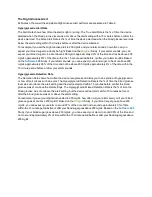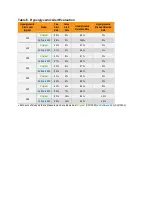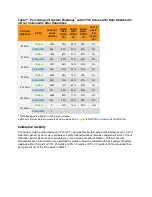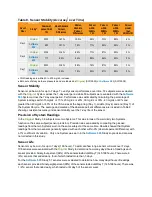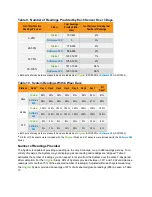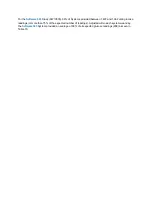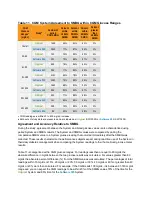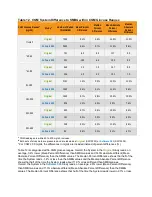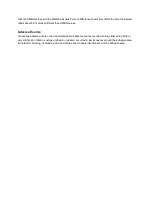
Low and High Glucose Alerts
The ability of the System to detect high and low glucose levels is assessed by comparing System results to
YSI results at low and high blood glucose levels and determining if the alert may have sounded. The System
and YSI values were compared by pairing the System reading that occurred immediately after the YSI value
was collected. We suggest that you ask your doctor what alert settings would be best for you.
The Low Glucose Alert
Estimates of how well the adjustable Low Glucose Alert performs are presented in Table 5.
Hypoglycemia Alert Rate
The Alert Rate shows how often the alert is right or wrong. The True Alert Rate is the % of time the device
alarmed when the blood glucose level was at or below the alert setting within 15 minutes before or after the
device alarmed. The False Alert Rate is the % of time the device alarmed when the blood glucose level was
above the alert setting within 15 minutes before or after the device alarmed.
For example, if you set the Low Glucose Alert to 70 mg/dL and your alarm sounds, how often can you
expect your blood sugar to actually be low? Based on the
Original
Study, if your alarm sounds, you can
expect your blood sugar to be below 70 mg/dL approximately 79% of the time and not be below 70 mg/dL
approximately 21% of the time within the 15 minute period before or after your alarm sounds. Based on the
Software 505
Study, if your alarm sounds, you can expect your blood sugar to be below 70 mg/dL
approximately 92% of the time and not be below 70 mg/dL approximately 8% of the time within the 15
minute period before or after your alarm sounds.
Hypoglycemia Detection Rate
The Detection Rate shows how often the device recognizes and alerts you to an episode of hypoglycemia or
how often it misses such an event. The Hypoglycemia Detection Rate is the % of time the blood glucose
level was at or below the alert setting and device alarmed within 15 minutes before or after the blood
glucose was at or below the alert settings. The Hypoglycemia Missed Detection Rate is the % of time the
blood glucose was at or below the alert setting, but the device did not alarm within 15 minutes before or
after the blood glucose was at or below the alert setting.
For example, if you set the Low Glucose alert to 70 mg/dL, how often will your alarm alert you if your blood
glucose goes below 70 mg/dL? Based on the
Original
Study, if your blood sugar goes below 70 mg/dL,
you can expect your alarm to sound 83% of the time and not to sound approximately 17% of time within
the 15 minute period before or after your blood sugar goes below 70 mg/dL. Based on the
Software 505
Study, if your blood sugar goes below 70 mg/dL, you can expect your alarm to sound 91% of the time and
not to sound approximately 9% of time within the 15 minute period before or after your blood sugar goes
below 70 mg/dL.

















